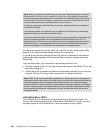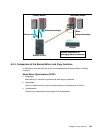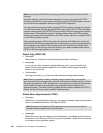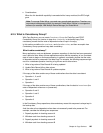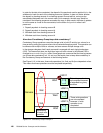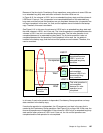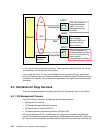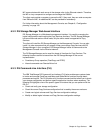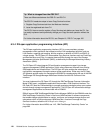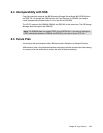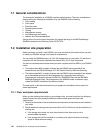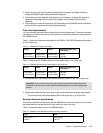
110 DS6000 Series: Concepts and Architecture
6.3.4 DS open application programming interface (API)
The DS open application programming interface (API) is a non-proprietary storage
management client application that supports routine LUN management activities, such as
LUN creation, mapping and masking, and the creation or deletion of RAID-5 and RAID-10
volume spaces. The DS Open API also enables Copy Services functions such as FlashCopy
and Remote Mirror and Copy. It supports these activities through the use of the Storage
Management Initiative Specification (SMIS), as defined by the Storage Networking Industry
Association (SNIA).
The DS Open API helps integrate DS configuration management support into storage
resource management (SRM) applications, which allow customers to benefit from existing
SRM applications and infrastructures. The DS Open API also enables the automation of
configuration management through customer-written applications. Either way, the DS Open
API presents another option for managing the DS6000 by complementing the use of the IBM
TotalStorage DS Storage Manager Web-based interface and the DS Command-Line
Interface.
You must implement the DS Open API through the IBM TotalStorage Common Information
Model (CIM) agent, a middleware application that provides a CIM-compliant interface. The
DS Open API uses the CIM technology to manage proprietary devices such as open system
devices through storage management applications. The DS Open API allows these storage
management applications to communicate with a DS6000.
IBM will support IBM TotalStorage Multiple Device Manager (MDM) for the DS6000 under the
IBM TotalStorage Productivity Center in the future. MDM consists of software components
that enable storage administrators to monitor, configure, and manage storage devices and
subsystems within a SAN environment. MDM also has a function to manage the Copy
Services functions, called the
MDM Replication Manager.
For further information about MDM, see 14.5, “IBM TotalStorage Productivity Center” on
page 282.
Tip: What is changed from the ESS CLI?
There are differences between the ESS CLI and DS CLI.
The ESS CLI needs two steps to issue Copy Service functions:
1. Register Copy Services task from the Web user interface.
2. Issue the registered task from CLI.
The DS CLI has no need to register a Copy Services task before you issue the CLI. You
can easily implement and dynamically change your Copy Services operation without the
GUI.
For further information about the DS CLI, see Chapter 10, “DS CLI” on page 195.



